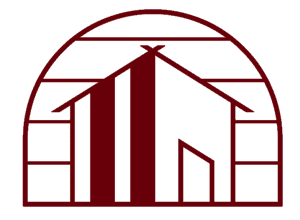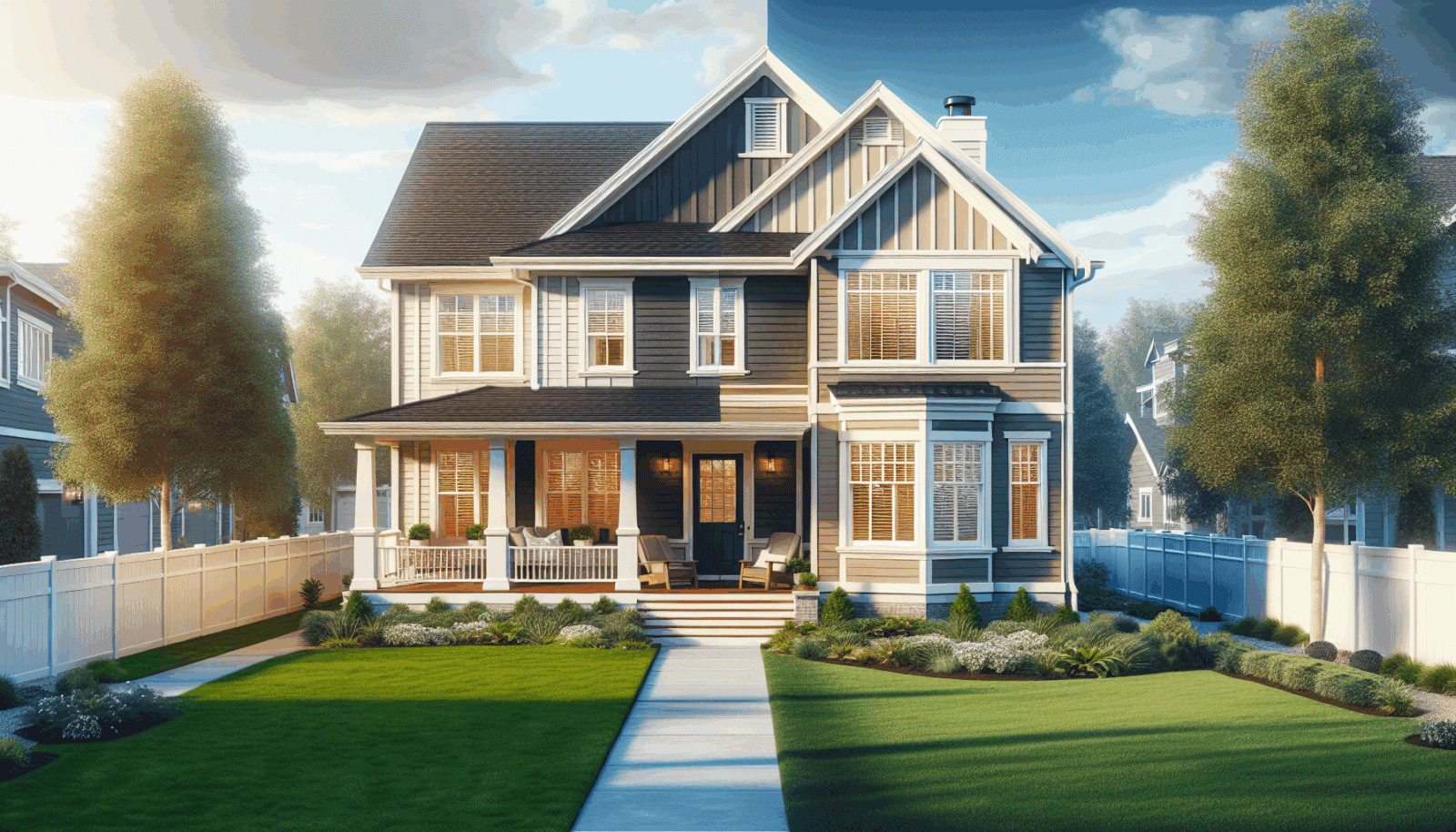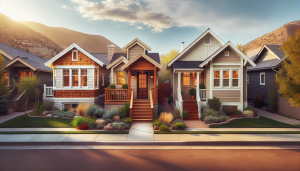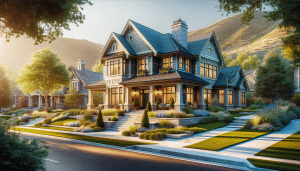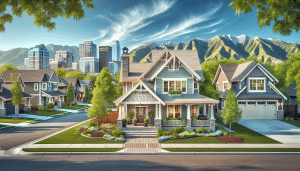Choosing between Hardie Board and Vinyl Siding can be a daunting task for any homeowner, but it doesn’t have to be! Here at Utah Siding & Exteriors, we specialize in providing clarity and guidance to homeowners just like you. With so many factors to consider, this article will help you make an informed decision that perfectly suits your home’s needs. Whether you’re seeking durability, aesthetics, or cost-effectiveness, we’ve got the information to settle your siding dilemma once and for all.
Understanding the Basics: Hardie Board
To start, let’s dive into what Hardie Board siding is all about. Recognized for its durability and aesthetic appeal, Hardie Board is made from fiber cement, which is a wonderful mix of cement, sand, and cellulose fibers. This merging of materials gives Hardie Board its legendary strength and resilience.
What many homeowners love most about Hardie Board is its stunning resemblance to wood without the drawback of rot and insect damage. Furthermore, Hardie Board offers a more natural look, often coming in a vast array of colors and textures which can beautifully mimic real wood or other materials. So, if you’re aiming for a classic, timeless look, Hardie Board might just be your go-to option.
Vinyl Siding: An Overview
Now, let’s switch gears to vinyl siding, a popular choice among many homeowners. Vinyl siding comes from synthetic plastic polymer, mainly polyvinyl chloride (PVC). This makes it a lightweight and cost-effective option compared to other siding materials.
One of the most appealing aspects of vinyl siding is its versatility. Available in numerous colors and textures, vinyl siding can complement any home style. It’s beneficial for those thinking about budget-friendly champions, as vinyl generally offers a lower cost in both materials and installation compared to Hardie Board. Easy maintenance is another winning factor — a simple power wash typically keeps it looking fresh and new.
Durability: Which Stands the Test of Time?
When it comes to durability, Hardie Board certainly makes a strong case. Hardie Board is robust and can withstand harsh weather conditions, be it wind, rain, or sun. Its tough composition makes it exceptionally resistant to fire and pests, enhancing the safety and longevity of your home.
Vinyl siding, while still durable, tends to fare less impressively in extreme temperatures. Strong impacts can lead to cracks or damage over time. However, its ability to resist moisture damage keeps it from rotting or corroding, making it a reliable choice in more moderate climates.
Maintenance: Keeping Your Siding Looking Its Best
When considering maintenance, you’ll find that both siding types come with options that won’t eat up all your weekends. Hardie Board does require periodic painting to maintain its pristine appearance, usually every 10-15 years. Given its resistance to pests and decay, regular visual checks and occasional cleaning with a gentle soap solution are sufficient to maintain its allure.
On the other hand, vinyl siding boasts its low-maintenance nature. Unlike Hardie Board, vinyl does not need regular painting, which can be a significant advantage for busy homeowners. An occasional cleaning with a garden hose and perhaps some mild detergent is all it takes to keep vinyl siding looking neat.
The Aesthetic Factor: Customizing Your Home’s Look
When it comes to curb appeal, both Hardie Board and vinyl siding offer a plethora of options to suit your design preferences. Hardie Board takes the lead if you’re seeking a genuine wood look and traditional architectural appeal. Its detailed textures and finishes offer an authentic look that’s hard to replicate.
Vinyl siding appeals to those who favor a modern, vibrant appearance. With an array of styles, colors, and profiles to choose from, the possibilities with vinyl are nearly endless. Whether you want a bold splash of color or a subtler vibe, vinyl provides the versatility to achieve your desired look without breaking the bank.
Environmental Impact: Building Green
In terms of environmental friendliness, Hardie Board has the edge. Manufactured from sustainable materials, Hardie Board offers excellent longevity, reducing the need for frequent replacements and, by extension, waste.
Vinyl poses some challenges in this regard, as its production process involves the use of PVC, which contributes to environmental pollution. However, advancements in recycling technology for vinyl siding are paving the way for greener solutions, making it a more viable option for eco-conscious homeowners over time.
Installation Differences: What You Need to Know
Installation is a critical component that can affect both the cost and performance of your siding. Hardie Board requires professional installation because of its heavyweight and need for specific tools. It’s crucial to ensure that it is properly installed to capitalize on its protective benefits.
In contrast, vinyl Siding Installation is generally more straightforward and can even be a DIY project for those handy around the home. Its lightweight nature simplifies installation, which can, in turn, reduce labor costs and time commitments compared to Hardie Board.
Cost Comparison: Budget-Friendly Choices
Every homeowner must weigh the cost factor when choosing siding. Hardie Board presents a higher upfront cost, both in materials and installation, owing to its robust quality and added labor intensity.
Vinyl siding shines as the budget-friendly choice, offering lower initial costs. Its affordable materials and simplified installation process make it attractive for homeowners working with tight budgets. Nonetheless, it’s essential to factor in the potential long-term maintenance and replacement costs when comparing these two options.
Making the Decision: Key Factors to Consider
Ultimately, choosing between Hardie Board and vinyl siding hinges on several key factors that align with your specific needs and circumstances. These include:
- Climate: Consider your local weather conditions. If you face extreme weather, Hardie Board’s durability can be worth the investment.
- Budget: Weigh the upfront costs against long-term savings. Vinyl offers cost-effectiveness but may require more frequent replacements.
- Aesthetic Preferences: Decide whether you prefer the traditional appeal of Hardie or the versatility of vinyl.
- Maintenance Willingness: Consider how much time and effort you’re willing to invest in maintenance.
- Environmental Concerns: Weigh the ecological impact of each material against your green building goals.
Final Thoughts
Choosing the right siding is about meeting your needs and aligning with your lifestyle. Both Hardie Board and vinyl offer unique benefits and challenges that deserve consideration.
For further assistance or to discuss your siding needs, please get in touch with us by phone at 801-509-9241 or Request a Free Quote.
